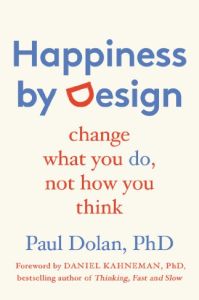Join getAbstract to access the summary!

Join getAbstract to access the summary!
Paul Dolan
Happiness by Design
Change What You Do, Not How You Think
Hudson Street Press, 2014
What's inside?
Make yourself happy by paying attention to – and doing more of – the activities that bring you purpose and pleasure.
Recommendation
Behavioral Science Professor Paul Dolan defines happiness as “experiences of pleasure and purpose over time.” To become happier, pay attention to what makes you happy and do more of it. That advice sounds simple, but it can be hard to implement because your “mistaken desires, projections and beliefs” block your way to happiness. Another impediment to happiness are distractions, both from your internal thoughts and external environment. To pinpoint what makes you happy use the “day reconstruction method.” Record your daily activities and activity partners and rate each activity’s pleasure and purpose on a numerical scale. Dolan’s psychological terminology can be daunting, but he provides a unique perspective on happiness and its meanings. getAbstract recommends his conclusions to academics interested in happiness and to anyone seeking greater joy and fulfillment.
Summary
About the Author
International expert on happiness, behavior and public policy Paul Dolan, PhD, is a Professor of Behavioral Science at the London School of Economics and Political Science.
















Comment on this summary